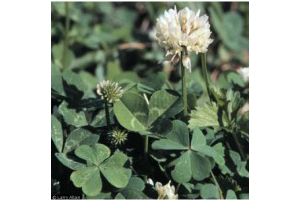Although most white clover plants/clones live about 20 years, some may live 100 years or more.
Photo Credit: © Larry Allain, National Wetlands Research Center, USGS, USDA-NRCS PLANTS Database.
Trifolium repens
Common Name: white clover
Other Common Names: Dutch clover, ladino clover
Plant Functional Group: Forb
Class > Order > Family: Magnoliopsida > Fabales > Fabaceae
